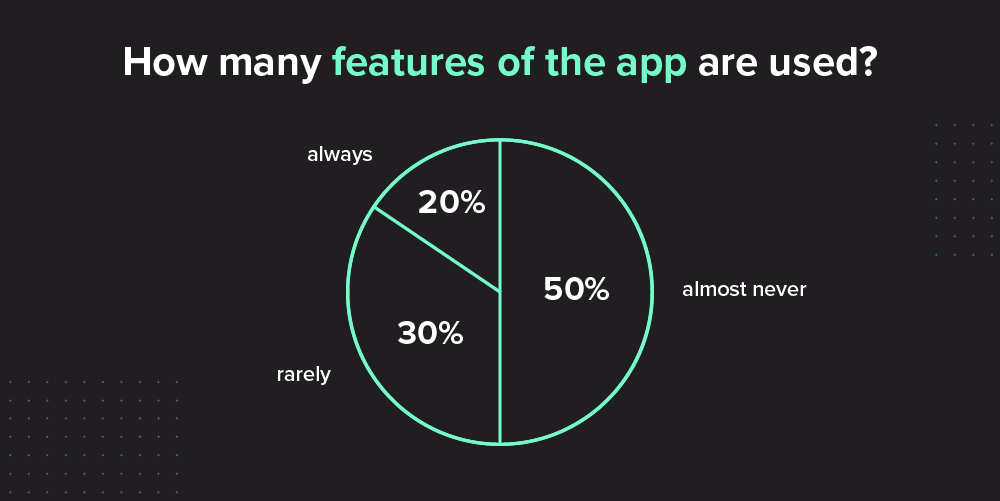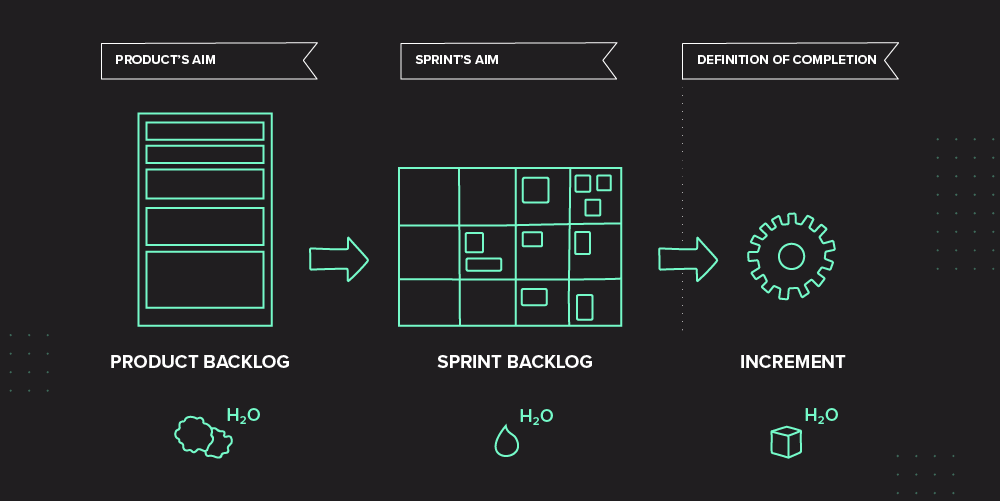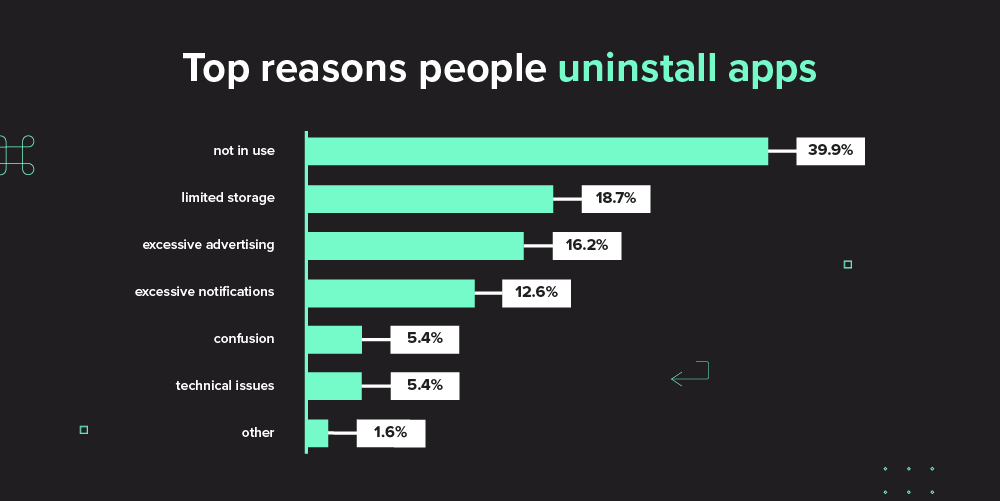What is business value in agile and why is it crucial for product success
The goal of software development is to provide business value. It’s not about products’ delivery themselves but what value they bring. Moreover, our years of experience allowed us to see a strong correlation between delivering business value in a product and its success. Interested in more details? Let’s explore this topic further.
Focus on value
Contrary to appearances, the product business value is a challenging component to determine. It’s influenced by many elements, including the personal opinions of various stakeholders. On the other hand, the business value is the most important concept that sets the direction of team’s work on the product. Therefore it’s worth putting in the effort to define the business value, and understand what needs or problems to solve are behind it, and how it can change during the project.
The agreed business value must be a common perspective with an understandable definition for everyone – the client and the development team, and in no case can these two visions differ from each other. Accordingly, transparent cooperation and communication between the client and the software company are important from the very beginning of work on the project.
What is the business value?
Business value is a viewpoint that allows people with different perspectives to understand each other and identify what really matters to the product. For organizations, what matters is usually the value that brings economic profits. It can be a profit understood as the product revenue, e.g. from its sale, or some other benefits that can be built in the long term, e.g. development of the company thanks to a valuable software which will bring more customers in the future. Other factors that can equate to business value:
- Reducing costs
- Minimizing risk
- Ensuring customer/stakeholder satisfaction
- Providing innovation
- Shorten delivery time
- Decreasing complexity
- Increasing quality.
The same vision for all
As you can see, what value is, depends on the context, that must be explained and commonly shared. The definition of the main business value for the product, and hence understanding it clearly, allows the development team to build individual functionalities with the best suitable technology so that every detail brings the product closer to achieving its core business value
Business value can depend not only on subjective experiences and interpretations but can also change over time. Example? Let’s say you start developing a mobile application, and the core business value is to get people to download the app. Later, when you know that users have the app, the meaning of the business value changes to get people to use it more. The conclusion is that business value, due to many factors it depends on, should be constantly verified and redefined if needed.

Highest priority business value: user value
Additionally, in terms of importance, not all values are created equal. Thus they need to be prioritized appropriately to their weight. Among differently understood values, the most important for the business appears to be the user value. The business directs services and products to the users, and therefore their needs must be investigated, defined, and addressed by the product.
It’s worth keeping in mind that value for the user is built by meeting various kinds of needs that people have. Interestingly, the more user’s needs the product meets, the better chance for success it has. Value (understood from a human perspective) consists of 30 needs that go into 4 categories.
- functional, e.g. saving time or reducing the effort
- emotional, e.g.reducing anxiety or providing fun
- life-changing, e.g. providing motivation or enabling self-organization
- social impact, e.g. self-actualization
Some of them help people to manage their internal world, others are focused more externally, helping consumers to operate outwardly.
The trick, however, is not to deliver a product filled to the brim with lots of features, but to find the ones that matter. That is simply to create unique value. Discovering the needed value is a key element, as people use, and tend to be loyal to the products because of their value, not because they are overloaded with functionalities.
What are the basic elements of user value worth considering to deliver?
1. Relevancy. How your product solves customers ’problems or improves their situation.
2. Quantified value. What exact benefits does the product deliver?
3. Differentiation. How is your product different from others on the market?
You can’t create a product without business value
The product aims to respond to the users’ needs. There is no other and right way to think about the product. Let’s discuss it in an example of a mobile app. Applications that don’t meet users’ needs, and don’t bring a unique value, have a good chance of joining applications with a high churn rate. Additionally, many studies confirm that users download apps but then quickly uninstall them because they just don’t use them. ’Only 1 in 4 users keep an app’ says the most disturbing statistic for app owners.
Therefore, having a good UX and investigating users’ needs is crucial. The point is not to create an application according to a subjective opinion about what we like personally, but simply to examine the needs of consumers and respond to them with value. Another important thing is that applications are very often overloaded with features delivered (for which someone had to pay), which ends up with the user not using most of them. The user simply chooses the ones that are valuable and the most useful.

Measure value
After precisely determining the business value, it is good to embed it into the product development process. What impacts the value or emerges as its result? How can we evaluate the value to make it less abstractive?
Think of:
- What problem or challenge do you try to solve with your business value?
- What is the easiest and fastest solution to the problem?
- Will it be useful for your clients?
- Will users use it?
- How can you confirm that what you create is right?
- What is the easiest and shortest way to deliver the value, both for your customers and organization?
- What is the time of value implementation, which, among others, translates into costs
- And the icing on the cake – how we will measure the delivery of business value.
If you struggle with defining the business value and determining factors impacting the usability of your product, try to use lean canvas for understanding the value of your product. All successful companies have them, so try to create the one that works for you. Here you have an inspiration of 5 Lean Canvas Examples of Multi-Billion Startups.
How do we measure business value
Find below an example of how the business value can be measured in practice.
Problem: employees spend a lot of time manually reporting problems, 1h per form
Value: saving an employee’s time by automating the manual problem logging
Target value: 15min per form
Time frame: 3 months
Solution: an automated system for reporting problems
Measurement method: problems log time
Costs: hours of work/wages to pay
Having outlined such elements as value, delivery time, costs, and the method of measurement, we know where we stand and what exactly is behind a given value. This value approach is supported by Agile methodologies ensuring that the product brings business value.
Agile as a guardian of business value
At Software Things, we rely on Agile as an approach to project management, because we have learned more than once that Agile makes sure the delivered product is useful as it brings business value.
“Scrum (n): A framework within which people can address complex adaptive problems, while productively and creatively delivering products of the highest possible value. “ an excerpt from the scrum guide
Additionally, many studies have been conducted on the topic of how Agile translates into results of development work and the conclusions are clear:
„Data from 5183 respondents from agile teams worldwide present agreement on 67% more productivity, 65% more quality and 49% better on the cost coming from Agile compared with traditional methods. „ Source The Business Value of Agile Software Methods by dr. F. Rico, Dr. H. Sayani, Dr. S. Sone page 89
The Agile methodology and its tools: Scrum or Kanban, enables organizing the product development in a way that allows business value to be always at the back of your head. How does it happen? Thanks (but not only) to Scrum artifacts and events that allow the team to organize work and set business objectives.
Product Backlog
Product Backlog is a list of user stories, general tasks, needs, ideas – everything that helps to create the final product. It happens that customer requirements do not define the business value behind them, therefore building a backlog, and discussing it, allows for clarifying what values cover the requirements.
At Software Things we believe that each function should have a purpose that provides value, and if the value is not visible to us, we talk to the client to find out that value. In other words, we are not afraid to question the requirements if we feel that they do not translate into business value. Why? A product that brings value has a much greater chance to succeed, and that is what we wish for the products we create. Our experience allows us to see a strong correlation between delivering business value in a product and its success.
The Product Backlog based on values, allows developers to understand what aim is to be provided by individual functionalities, and what needs they respond to. This knowledge supports choosing the right technology while taking into account the time and cost of implementation (Product Owner responsibility).

Backlog Sprint
Creating a Backlog Sprint (another Scrum artifact) based on a Product Backlog, in which the values are clearly visible, allows the team to plan sprint with determining the appropriate order of tasks, precisely naming them, and defining a DoD (definition of done) which should be measurable and correspond to the business value.
Increment
At Software Things, we want the client to be involved in the development process. Scrum definitely helps in this, because it allows developers to provide functionality in shorter iterations, after which customer feedback is crucial for the increment (third artifact and one of the agile metrics) to be further developed.
In addition, the customer’s participation in the product development process allows him to make decisions more easily. Being involved in the process, the client knows what the challenges are, and it is easier for him to understand what lies behind introducing changes that might seem easy and quick, and very often they are not.
and our favorite event: Retrospective
A great way to improve the quality and efficiency of work is to conduct a Retrospective meeting. It is a chance to: 'Use the past to define the future’ but also to talk with people about experiences and thoughts they had during the sprint. At Software Things, we try to use Retrospective to engage the client and have a meaningful discussion. It is a time when we as a team (and we treat the client as a part of a team) can think about what happened in the sprint and define actions and changes for further improvement.
Moreover, we treat Retrospective as a meeting enabling the client to be on the same level of knowledge as a team and to discuss changing requirements. Last but not least, the retro is also a chance to check if our way of working supports delivering business value.
Flexible team
We know that each project is different, the same as the client’s needs and the specificity of the product. For this reason, we always try to flexibly select our way of working to the situation and skillfully combine agile and traditional methodologies.
However, we believe that the Agile methodology is the most conducive way not only for the project management but also to deliver the business value of software projects– a key factor to the product’s success.
What is more, we are true advocates of the first principle of the Agile Manifesto: individuals and interactions over processes, and that’s why we are willing and ready to undertake another cooperation with people who, like us, want to provide value with products.
Learn more about our team and how we work so we can create together the agile business value.
Read more about

Contact
Benefit from a free consultation
Ready to turn your software idea into reality? Collaborating with us means benefiting from our experience, expertise, and cutting-edge technology to bring your vision to life. Simply share a few words with us about your idea, and our expert will reach out to ask the ring questions.



